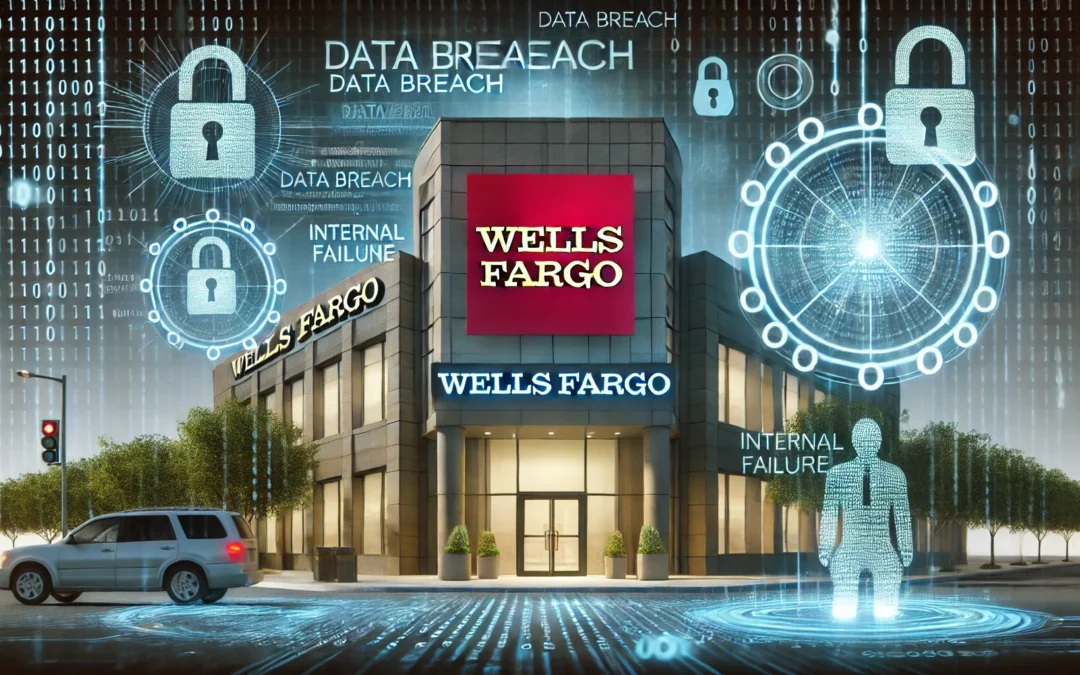The Wells Fargo data breach of 2024, one of many occurring in the shifting battlefield that is cybersecurity, serves as a stark reminder why strong security protocols and proactive internal controls are essential. The incident, which most commentators are attributing to an internal policy violation rather than a cyber-attack from the outside, has not only affected one of the world’s biggest financial institutions but demonstrated that it is in possession of significant holes when under pressure. In this blog post, we will break down the specifics of the breach and what they mean for financial institutions (FI) as well as consumers, while looking at how it could have been avoided in the first place.
The Incident: What Happened?
Wells Fargo announced in February 2024 that it had reported a data breach leading to the unauthorized disclosure of numerous confidential customer details. But instead of being the result of a sophisticated external cyber-attack, this particular breach was caused by careless data handling on behalf of an employee. The employee entered highly confidential customer data, including names and mortgage account numbers into this personal account in violation of company policies. The bank said it affected about 10,000 customer accounts and alarmed many in its clientele as well as the broad financial community.
Rapid Response and Remediation
Wells Fargo acted quickly once they found out about the breach to limit exposure, and are taking additional measures as these scams evolve. The bank has sacked the employee responsible and alerted people affected by it. Wells Fargo also gave these customers free access to Experian Identity Works, which includes 24/7 credit monitoring and identity restoration assistance for two years. The bank has introduced additional safety practices and protocols to prevent similar events in the future.
More Overreaching Financial Stability Implications
The Wells Fargo breach is particularly notable for several reasons. This emphasizes the need for established internal controls that address security and user education. Attackers will only turn to a Cyber kill chain meat attack as outside defense gets stronger, the flip side is that even with strong external defenses all bets are off if internal policies aren’t strictly adhered to. This goes a long way to point out the obvious: No matter what firewalls you have or how your data is being protected, human error mixed with malicious behavior from an insider keeps on existing and should not be underestimated as risks involving security of one’s data.
The second is that it highlights the kind of customer details financial firms are collecting and storing, which could speed along a needed revolution in how this data is protected. As financial services have gone digital, the importance of data security is ever more pressing. The exposed data, which includes mortgage account numbers, could be used in identity theft and financial fraud with long-term consequences to the victims.
Human Touch in Cybersecurity
Of all the things that stand out in relation to the Wells Fargo breach, one of them is undoubtedly human. The incident was not an elaborate cyber-attack; it happened simply because basic security practices were overlooked. These highlight the need for periodic employee training and awareness programs as well. All employees need to know that data security can harm the bottom line and bad things happen if you disobey policy, this should feel like a good pretext.
Consequences on the Legal and Financial Level
As a result of the breach, Wells Fargo was sued in several legal actions including one class action lawsuit. The litigation, filed in California Northern District Court, claims the bank negligently allowed customer data to be compromised. Unfortunately, the case not only underscores that data breaches can be costly but shows clearly how they may affect an organization’s reputation and consumer confidence even more.
What I would do differently in the future and my recommendations
Enhance Internal Controls: Financial entities should implement rigorous internal controls, and periodically measure that data security policies are being enforced. This involves enabling multi-factor authentication, crypto and security controls to prevent data leaking out.
Boost Employee Training: Regularly conduct training programs with employees to know why data security is important for their job, actions that could risk mishandling information not legally accessible and leave non-destruction lists.
One Strategy Detecting: Continuous monitoring of employee behaviors and access patterns is one way Sneek can detect unauthorized activities. “Using advanced analytics and machine learning tools can help to surface anomalies that point back at the potential breach.
Create a Response Plan: A good incident response plan is key to responding quickly to data breaches. This plan should cover immediate breach containment steps, customer notification protocols and follow up risk mitigation efforts.
Communicate with Customers: After a breach having an open communication policy can help build trust again with your customers. Clearly defining the actions customers can take to protect themselves and providing services such as identity theft protection are definitive.
Also Read: Understanding the Golden Cross in Stock Market Trading
Conclusion
Invisible(One) TeenX: The Wells Fargo data breach of 2024 reminds us all about the weakest link in even the safest bank The breach, though not from an external cyber-attack as per initial reports showed serious lack of security controls internally. While banks have been able to spend the better part of a week attempting to get ahead they should move on this learning from what has happened here to strengthen their data security and reassure customers that despite situations like above people are not facing an increasing risk. In other words, consumers need to continue being aware and diligent about their personal data security in an age of fast-moving digital disruption.

